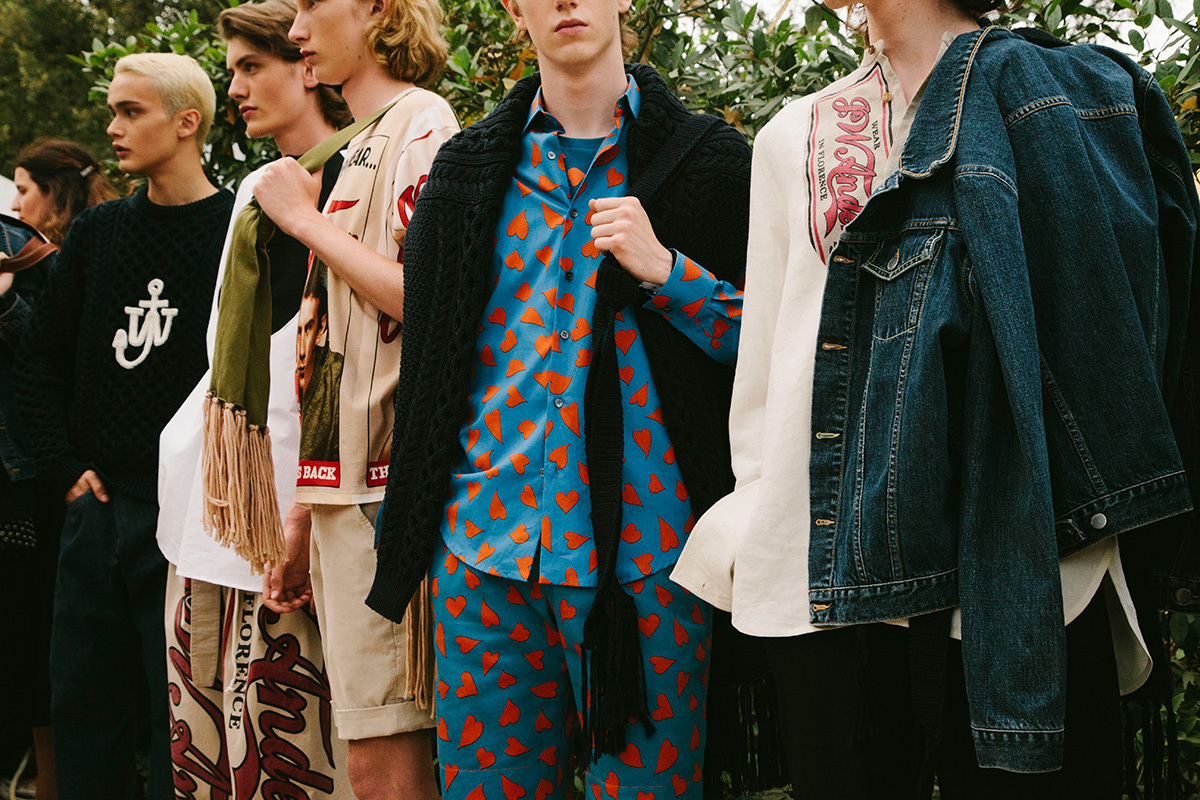This story was originally published by i-D UK.
Had there been a theme for this season’s Pitti Immagine, the menswear fair in Florence, they could have called it “The Millennials.” Invited to show on the prestigious platform, which has hosted designers like Helmut Lang and Raf Simons in the past, were new guard banner holders J.W.Anderson and Off-White. As designers, Jonathan Anderson and Virgil Abloh’s métiers are different — Anderson came up through high fashion while Abloh is a streetwear designer —but they both share a thrill for the avant-garde and a highly referential point of departure when it comes to the designers they grew up loving. In an Instagram age that’s turned young fashion fans into experts, these two brands cater to the same fan club: the post-postmodern audience of customers too young to have grown up with Helmut Lang and Raf Simons — not to mention Martin Margiela, whose codes and values are more popular with the so-called Instagram labels than any other designer.
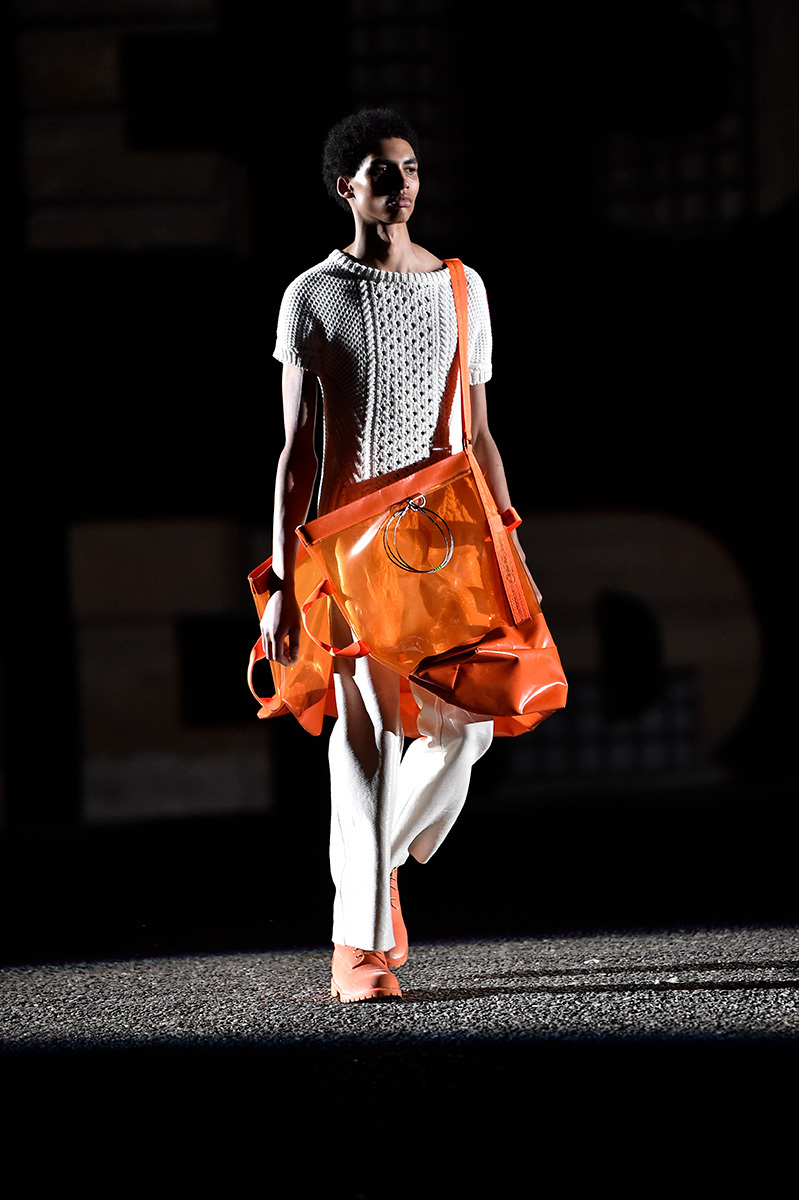
“I’m a sort of millennial brand. I embrace it. I can instagram Jenny Holzer and kids will actually go and research it,” Abloh admitted before his show on Thursday evening, which covered the rustic renaissance walls of Palazzo Pitti in poetry projections curated by Holzer, the artist who worked with Helmut Lang and showed with him in Florence 20 years ago. “But this is of a higher importance to me than just fashion. It’s messaging and having an opinion,” Abloh asserted. His collection was a direct answer to the political climate: “On a macro scale it’s very much about immigration. Refugees crossing borders and the personal will to almost die to cross a border — and what stories can be told within that.” He employed the plastic-y feeling of life rafts in techy fabrics and performance detailing, changing sportswear garments up with multiple zips and drawstrings, which made them transformable. Abloh then juxtaposed it with the artisanal rootsiness of intricate jacquard jackets and trousers, bringing about a sense of something hand-spun, human, and dignified in the sea of plastic.
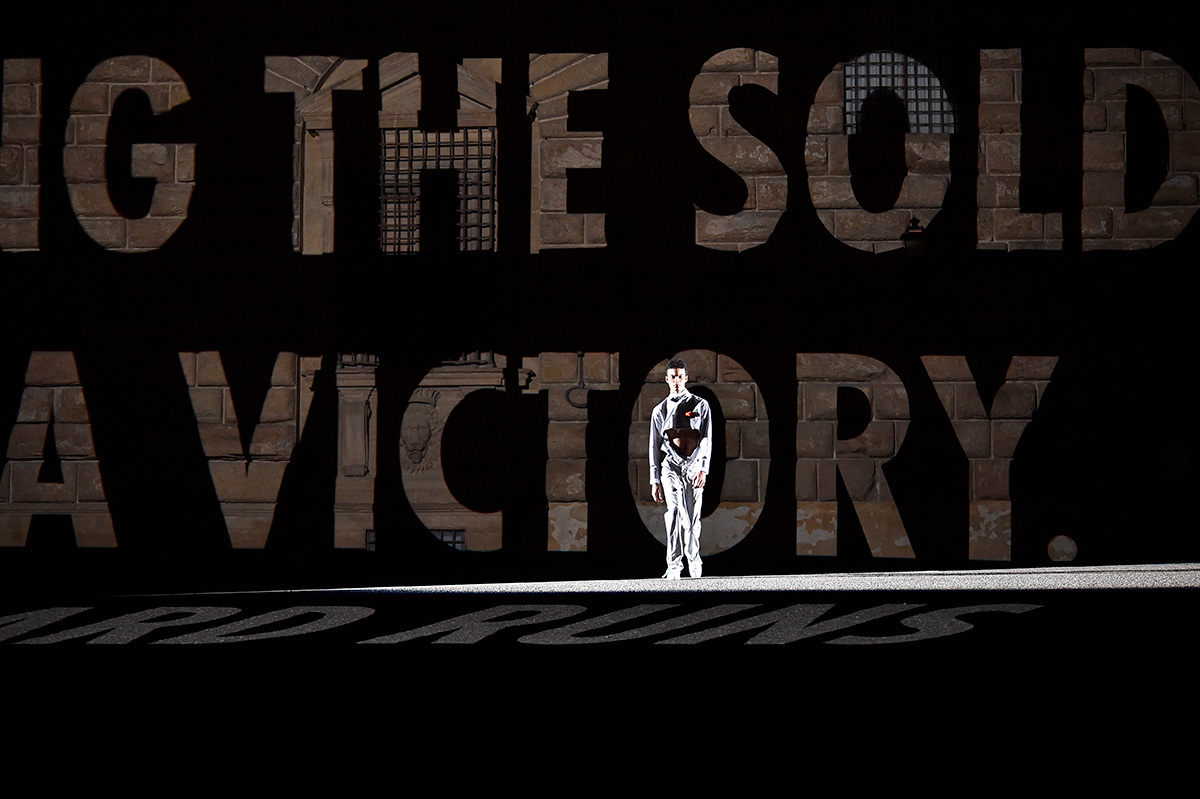
For all the rustling of those performance materials, the Off-White show sought to bring as much emotion into its streetwear disposition as it could, bathing the dark-as-night outdoor show (it started at 10:40pm) in golden spotlights and an opera soundtrack that did its part in the poignant department. “It’s streetwear but it’s also a mast for an idea and a generation,” Abloh said, talking about President Trump’s travel ban, the women’s marches, and Brexit. Asked how he deals with occasional comments in the media that his approach is too derivative (such as Raf Simons’s statements about him in GQ in January this year), Abloh didn’t hesitate. “This is the answer. Are we talking about garments, like ‘This person invented this thing in fashion’? Or are we talking about the world at large?”
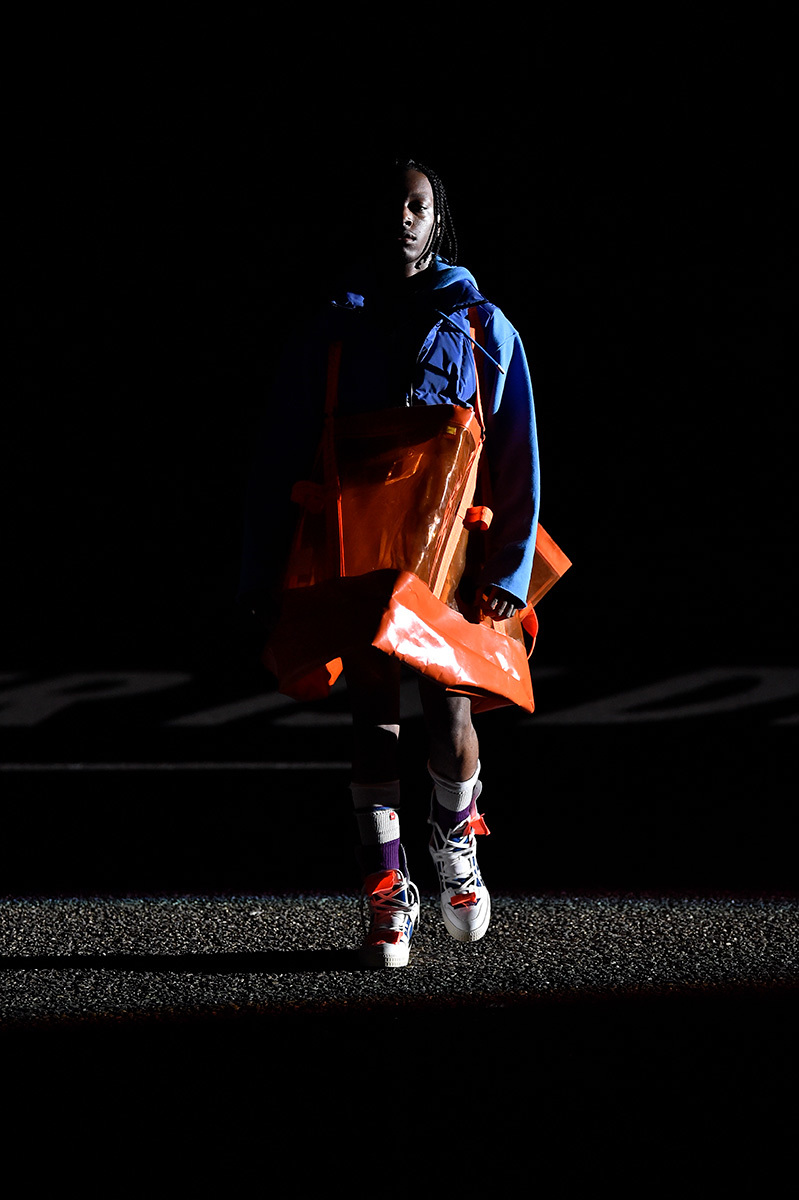
“Militant menswear” read an Instagrammable t-shirt in J.W. Anderson’s spring/summer 18 show, his own face splashed across it in homage to the wartime Coca-Cola advert. Certainly, Jonathan Anderson isn’t short on forceful ambition. His show, which took place at the dreamy Villa la Pietra in Florence on Wednesday evening, paraded his logo up and down the long grassy promenade in the hillside renaissance garden, leaving the branding to do the talking. The garments themselves were uncharacteristically quiet for Anderson, whose gender-bending menswear first put him on the fashion map some seven years ago, before womenswear and Loewe followed. Normcore, you might say — the term so closely related to Vetements and the cult label’s celebration — and elevation — of the simple things in life. Drawing on the work of Martin Margiela and Helmut Lang, Vetements reintroduced to new generations a sense of avant-garde dressing-down over the past three years so strong, it’s even seeped into the aesthetics of polar opposites like the lavishly ornate Gucci. It’s cool to be normal, to be a little off, to show blue jeans and white t-shirts in a majestic Florentine garden and cover its masterpiece statues in white sheets in high summer.
Read: Gosha Rubchinskiy does Burberry in St. Petersburg.

When the collection moved more in the way of fashion design, Anderson got cute — no doubt in the ironic way — with boyish knits featuring collector’s card motifs, heart prints on almost everything, and more hearts in the form of appliqué on a sort of deconstructed beige trench coat, which added the terrific artisanal value this collection was otherwise intent on brushing off. What was Anderson saying with all those hearts? Perhaps it was an admission of personal taste — that these are the clothes he loves to wear himself — but knowing his subversive ways it’s likely they were just another nod to normality: the heart, the most ordinary symbol in the world. How avant-garde! Anderson’s clothes are for those in-the-know, and that’s why branding played an invaluable part in this collection. You could assemble similar outfits from high street brands — blue denim jackets and shorts, a grey hoodie, a beige bomber jacket — but it just wouldn’t be J.W.Anderson, would it? The collection even featured a collaboration with Converse, apparel’s democratic hero favored by everyone from the bourgeoisie and the rebel, which had been J-Dubs-fied in glitter for added esoteric fashionability.

On the backdrop of flamboyant Florence, where da Vinci and Donatello broke with norms some five hundred years ago, Anderson’s provocation was of the contrary kind. It couldn’t have been farther away from the linen suits, waistcoats, shoes without socks, and foppish facial hair favored by the dandies, who frequent the menswear fair at Pitti Immagine, which hosted J.W.Anderson here in Florence. And yet, like a full face of natural makeup, the young designer’s new menswear proposals were as measured as the outfits of those peacocks. You just couldn’t tell. It’s the baffling beauty of an Instagram-era fashion industry where young fashion fans now understand that clothes don’t have to be flashy to be fashionable —quite the opposite, really, as witnessed in the popularity of Gosha Rubchinskiy, whose tongue-in-cheek collaboration with Burberry last weekend in St. Petersburg payed tribute to the British brand’s chav-tastic past. “It’s my dialogue with sartorial-ness, and with the guys getting photographed outside, and I hope we can dig in deeper,” Virgil Abloh said on Thursday night, referring to the street style stars of Pitti, who all belong to the same tribe of Instagram age millennials, whether they’re prancing up and down the street in a three-piece suit, an Off-White anorak, or a J.W. Anderson logo jumper. For the social media era’s new guard of designers, fashion is theirs for the taking.
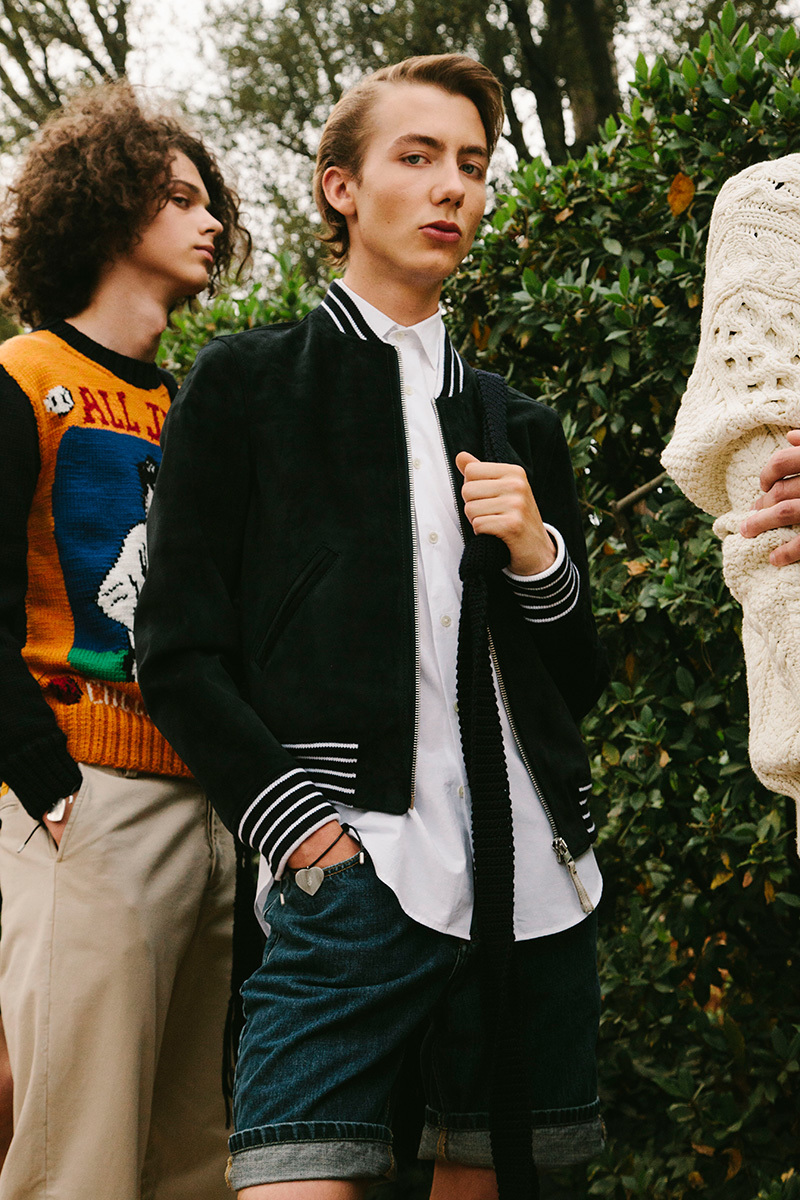
Read: “All the big fashion shows are only advertising” – Jean Paul Gaultier takes on the fashion fantasy.
Credits
Text Anders Christian Madsen
